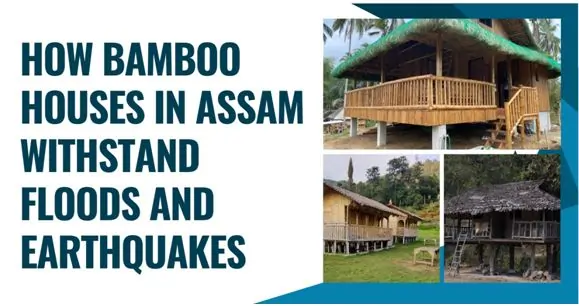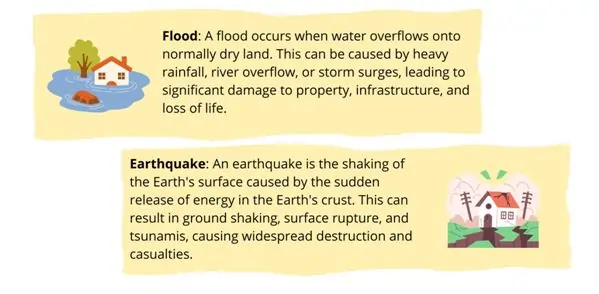
Being a flood-prone area and seismically vulnerable, the case study building showcasing the traditional bamboo house demonstrates a viable and durable response to the natural disaster problem. These houses, which are constructed at least, are raised from the ground on wooden pillars; seem to have been a feature of architectural design in Assam for a long time now. As built and constructed this types of houses are more tailored to face the ordeals of floods and earthquakes. This article is basically focused on the scientific aspect of wooden bamboo houses and their use in eradicating threat in Assam.
Bamboo in architecture of Assam
Once again bamboo is the most suitable material as it is abundant in this region because of the forests and tropical climate. This is a sylvan and can be cut within the period of three to five years depending on its variety and as such it is an eco-friendly product compared to timber and cement. Besides being flexible, strong and light in weight, it can be used to develop houses that could easily stand major disasters such as an earthquake.
The Development of Prototype in Bamboo House
Construction of the traditional bamboo houses are more or less similar to that of other such structures found across other parts of north-easternIndia ; the houses provide a raised wooden structure at an elevated height in order to be built from the ground. This design serves as a buffer against flooding which can easily occur in the monsoon period in the Region. These are ordinarily constructed from bamboo columns embedded on concrete foundation to enhance stability and flexibility. The houses also have cross bracing bamboo frame supporter that improves the supporting structure and reduced movement due to floods or earthquakes.
Flood Resistance
Flooding is frequent in Assam because the main river the Brahmaputra and practically all its main branches cross the state from north to south. These floods are easier to handle in bamboo houses because the buildings are elevated with flexibility in their structure. Stilts provide a space that enables the flow of water beneath the house and thus continue protecting the living area from water incursion.Bamboo as a construction material is light hence the houses can always be easily repaired or reconstructed once they have been destroyed by floods.
Earthquake Resistance
Another factor that needs consideration in case of construction of houses is that the geographical location of Assam brings it in direct seismic zone. Since Bamboo is quite pliable the structure is able to absorb and distribute the energy created by the seismic waves impacting the structure. The erecting technique applied for houses with bamboos involves cross bracing, which adds to the level of resistance buildings constructed from bamboo demonstrated in an earthquake. In this method, several bamboo poles are fitted together at different angles in such a way that they provide firm support for the structure that is under development while at the same time, it can bend or twist without breaking.
Eco-friendly or environment-friendly construction
Bamboo as a material has a relatively low carbon footprint than conventional built environment materials. Due to its ability to grow very fast and its high rate of propagation, bamboo is environmental friendly in its construction. Furthermore, bamboo used in the construction of the houses increases the use of locally available resources and hence decrease demand for importation of such resources. This approach helps local businesses and ensures minimum effects on the environment by the construction projects.
Community-Driven Initiatives
There are few community social mobilizations that have been initiated to support bamboo house construction in Assam. Non-governmental organizations such as Sustainable Environment and Ecological Development Society (SEEDS) have therefore collaborated with various communities to establish structures that are made from bamboo and that are disaster resistance. These initiatives engaged people about design, about the construction and the development programs of the community. This way, the houses required do get to meet the standards of the residents while the occupants shall have their ownership instilled in them.
Case and Success Histories
SEEDS has done a good example of managing a community driven flood response program in Assam building 80 bamboo houses after the floods in 2017. These houses have some characteristics that made it easy to withstand shocks, namely; the adjustment of joinery buildings such that a house owner could decide to raise the floor.
These project successes support the use of bamboo house solutions for safe and effective emergency housing in vulnerable locations.
Opportunities, Threats & Future Trends
However, bamboo houses have the following problems, skilled labour is required as well as the consideration in which bamboo is viewed as a temporally building material. Some of these challenges can only be solved by the collaboration of government departments, non-governmental organizations and the society. To overcome these challenges, authorities can extend key information in the bamboo construction advantages and organize training sessions that will allow builders to acquire new knowledge in using bamboo materials.
The trend for the bamboo houses in Assam is optimistic with more appreciation being given to the durability and sustainability element of green houses. This coupled with new challenges that climate change brings in future, has made bamboo houses a viable option towards construction of disaster resilient structures. With the help of conventional wisdom and advanced technology, it is possible to preserve and reproduce the experience of constructing homes for the future in Assam.
Bamboo Houses in Assam is a good example of the smart and tenacious people of Assam. These have been able to withstand floods, earthquakes and virtually any natural disasters on one part and impact positively on the environment on the other part making the entire land a model for sustainable housing. Houses made of bamboo materials have proved to be the best way to build the houses in the future of Assam as the region is frequently affected by the natural disasters. If Assam accepts this more conventional but revolutionary path, the state can then work for a stronger chance at a sustainable and disaster-free existence.
Floods and Earthquake in Assam

Floods in Assam
Here we will focus on Assam, which is situated in the north-eastern part of India and a region that has time and again experienced destructive floods. The major flood is stemming from the Brahmaputra River and its other affluents, which contribute to the flooding of this region. This river is very active and always shifting its course in a way that floods much of the basin during the monsoon period.It may be mentioned that Assam has been through a lot of severe flood disasters in the past. Looking into some of the historical floods that have occurred ranging from 1954, 1962, 1972 1977, 1984, 1988, 1998, 2002, 2004, 2012 up to as recent as 2022. These floods have claimed many lives, affected infrastructure and agriculture besides claiming very many lives. The 1950 Assam earthquake even shifted the riverbed of the Brahmaputra which made flood more frequent.
Earthquakes in Assam
Assam also stands in a seismically vulnerable zone, which cause it exposure to the regular calamities like earthquakes. It has been for some time with a high frequency of large earthquakes in the region. The largest and probably the deadliest recorded earthquake was the 8.6 magnitude Assam 1950 earthquake. Other significant Earthquakes are of 1869, 1897 and 1943. These areas have not only had the direct consequence on settlements and lives in the affected region but have also affected the geology of the region.
Mitigation Techniques in Floods and Earthquakes
Flood Prevention Measures
- Strengthening Embankments: Implementation of sound cross-vesting embankment constructions on the Brahmaputra and its affluences may aid to mitigate the temporary floods for the fragile zones.
- Flood Forecasting and Warning Systems: Enhancing accurate flood prediction and dissemination of timely warning can enable individuals plan and prepare for flood disasters.
- Flood Zoning: The measures of flood zoning regulations should be adopted to avoid constructions in the areas, which are exposed to frequent floods and to guarantee that the new constructions are flood-resistant.
- Siltation Control: By placing siltation control devices there, it becomes easy to curb the rate of sedimentation of river thus enhancing the flow of water and minimizing flooding.
- Rainwater Harvesting: Ensuing support of rain water harvesting can be useful for controlling the surface runoff and the pressure on the rivers in the time of rains.
Recommended Preparedness forthe Earthquake
- Building Codes and Standards: standardized structural codes and regulations can help guarantee that constructions are prepared for the forces of an earthquake.
- Public Awareness Campaigns: Campaigns through public awareness can help the citizens be informed of the likely measures to take before, during and after an earthquake.
- Emergency Response Plans: Authorities must incorporate the effective and coherent plans for responding to earthquakes and this could be useful to the authority as well as communities.
- Seismic Retrofitting: Depending on how strong a structure is, which usually requires alteration of existing structures to achieve it, the possibility of the structures collapsing was greatly minimized during the earthquake.
- Community Drills and Training: Capacity to mitigate losses of property is achieved if residents undergo community drills and training on a regular basis in case of earthquakes.
The occurrence of floods and the recent earthquake in Assam indicates that measures to safeguard people from disasters should not wait to be taken when hazards become disastrous. Underlining that structural and non-structural measure should be integrated to increase the level of the region’s readiness for future disasters and to prevent loss of life. The measures of flood include: embanking, river training, and rainwater harvesting; the measures of earthquake include: regulation of construction and education to the community. This way, Assam will be in a position to construct the future in which the population of the state and other associated areas can live safely, with much lesser likelihood of encountering severe disasters.